There are over 40 symptoms of Parkinson’s Disease. I’ve tried to list them all below in one handy guide. Not everyone has every symptom, and some symptoms appear as the disease progresses. They include motor and non-motor symptoms.
The illustrations are by Jonny Acheson, who was diagnosed with Parkinson’s aged 41. He also draws pet portraits! Please support his work here: https://jonnyacheson.com

Akathasia is an inability to remain still. https://www.ncbi.nlm.nih.gov/books/NBK519543/#:~:text=Akathisia%20is%20defined%20as%20an,usually%20involves%20the%20lower%20extremities.
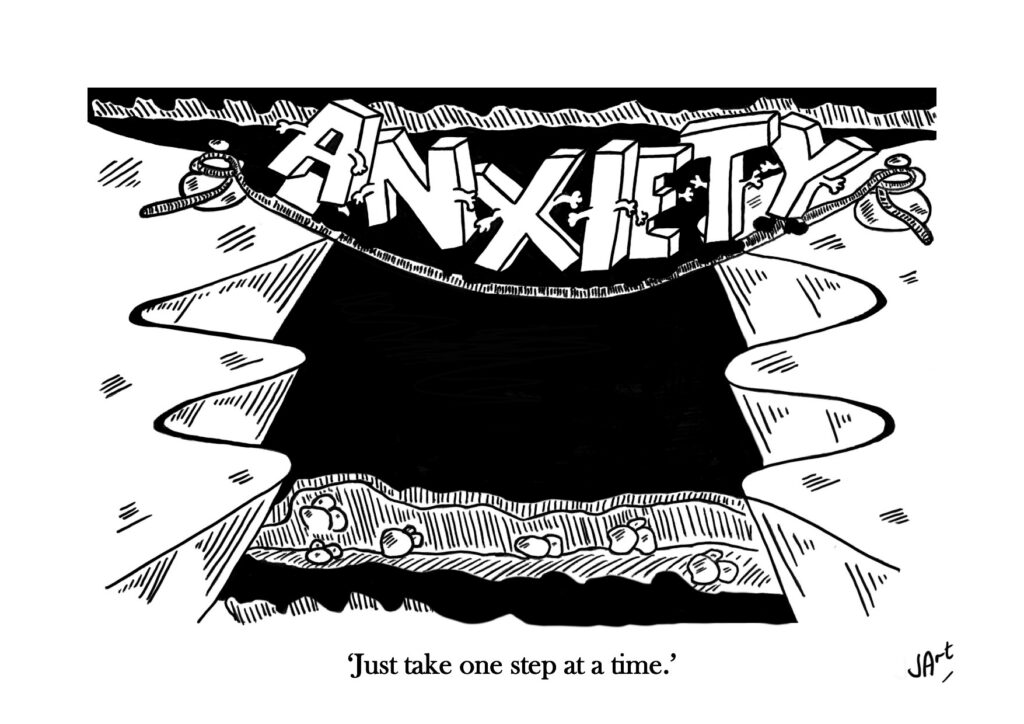
(From the Parkinson’s Foundation) Anxiety is not just a reaction to the diagnosis but forms part of the disease itself due to changes in the brain chemistry, and can include general anxiety, anxiety attacks, social avoidance and OCD. https://www.parkinson.org/understanding-parkinsons/non-movement-symptoms/anxiety

Apathy. Whatever.
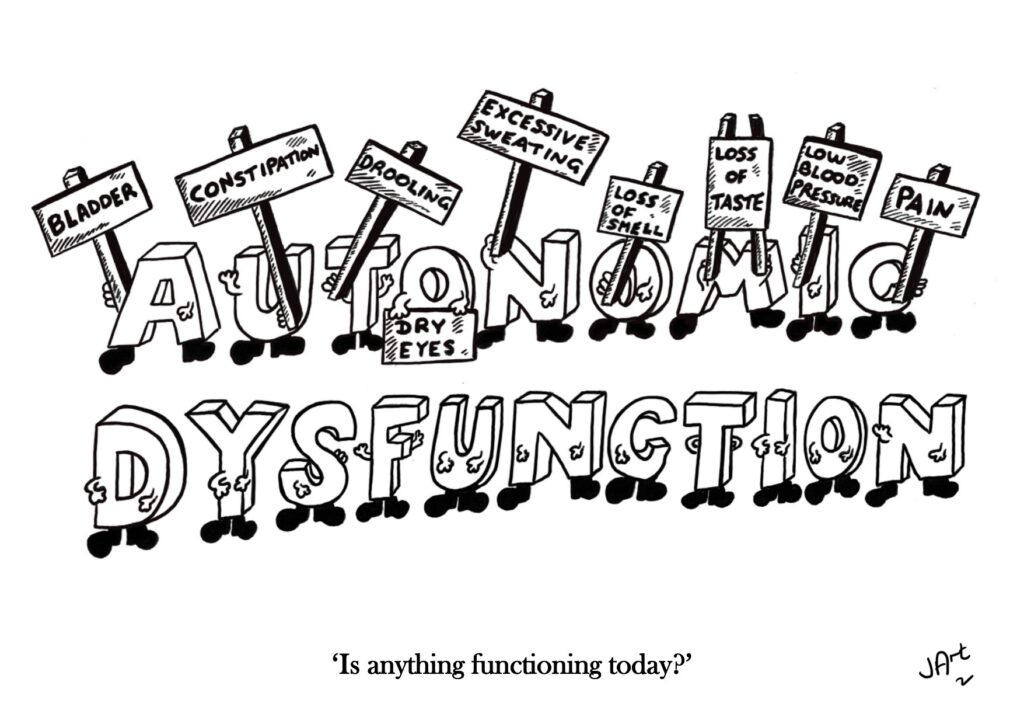
Autonomic Dysfunction covers some non-motor symptoms that can be present 5-20 years before typical Parkinson’s motor symptoms. Symptoms of Autonomic Dysfunction include constipation, urinary urgency, orthostatic hypotension, abnormal perpsiration and photophobia (https://www.frontiersin.org/articles/10.3389/fnagi.2021.761044/full)
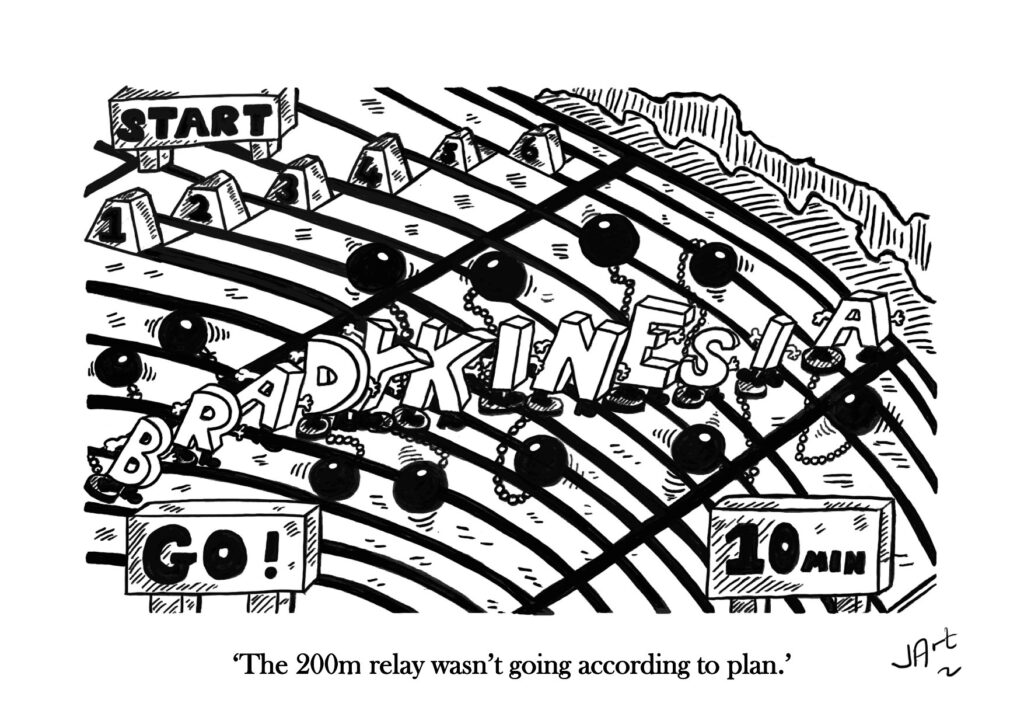
Bradkinesia or Slowness of movement is one of the main symptoms. It might mean struggling with coordination, walking may be more like a shuffle or slow down. Everyday tasks might take longer to do.

Constipation or Bowel problems. This is common in people with Parkinson’s. Slowness of movement and rigidity affect the muscles in the bowel wall so food is not moved along as it should. Physical activity helps bowel movements – as people with Parkinson’s find it difficult to move this contributes to the problem.
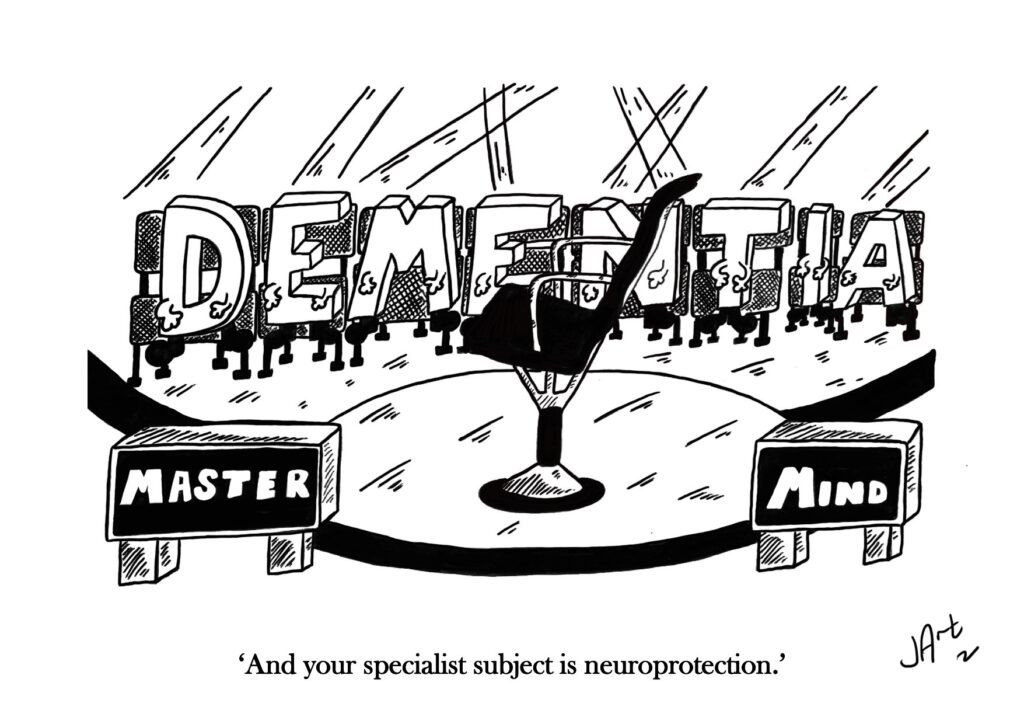
Dementia. Symptoms can include forgetfulness, slow thought processes and difficulty concentrating. This can make communication hard and finding words and names or following conversations can be a problem.
https://www.parkinsons.org.uk/sites/default/files/2018-10/FS58%20Parkinson%27s%20dementia%20WEB.pdf

Depression. Unlike sadness, which is temporary, depression can last for weeks or longer. Depression is a part of Parkinson’s itself, resulting from PD-related changes in brain chemistry. Parkinson’s impacts areas of the brain that produce dopamine, norepinephrine and serotonin — chemicals involved in regulating mood, energy, motivation, appetite and sleep.
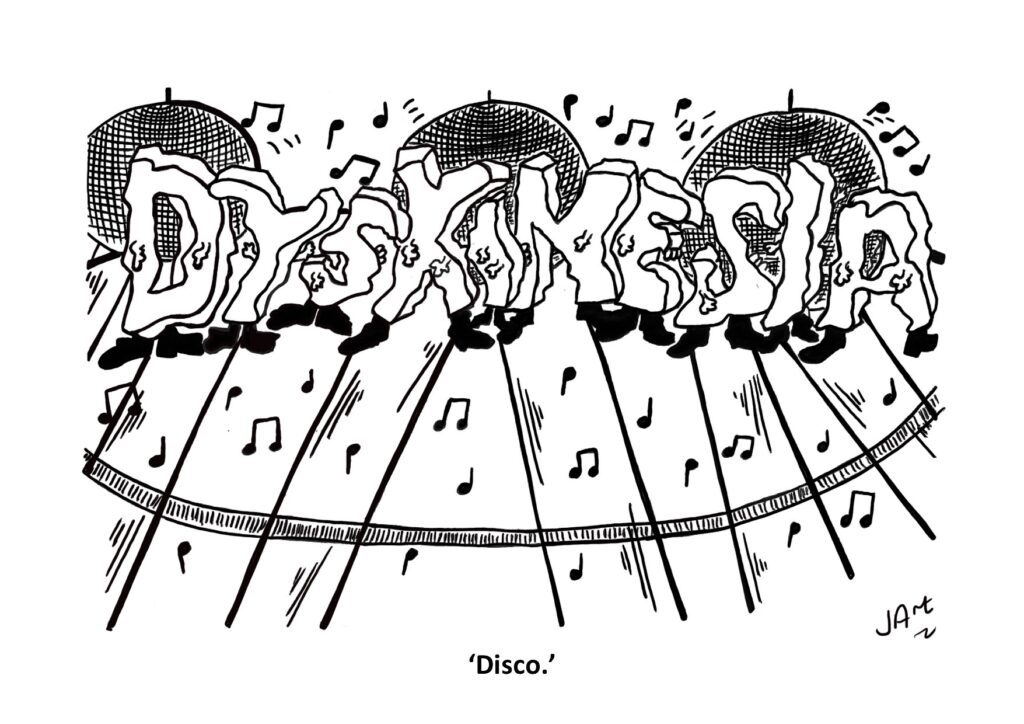
Dyskinesia is involuntary, erratic, writhing movement of the face, arms, legs or trunk. It is often fluid and dance-like, but it may also cause rapid jerking or slow and extended muscle spasms. It is not a symptom of Parkinson’s disease (PD) itself. Rather, it is a complication from some Parkinson’s medications.

Dystonia can be a symptom of Parkinson’s and some other diseases and is a movement disorder on its own. Painful, prolonged muscle contractions cause abnormal movements and postures, such as a foot turning inward or the head tilting sideways. The symptoms usually begin in one body region — neck, face, vocal cords, arm or leg — and, in some cases, may spread to other parts of the body. The severity varies from person to person.
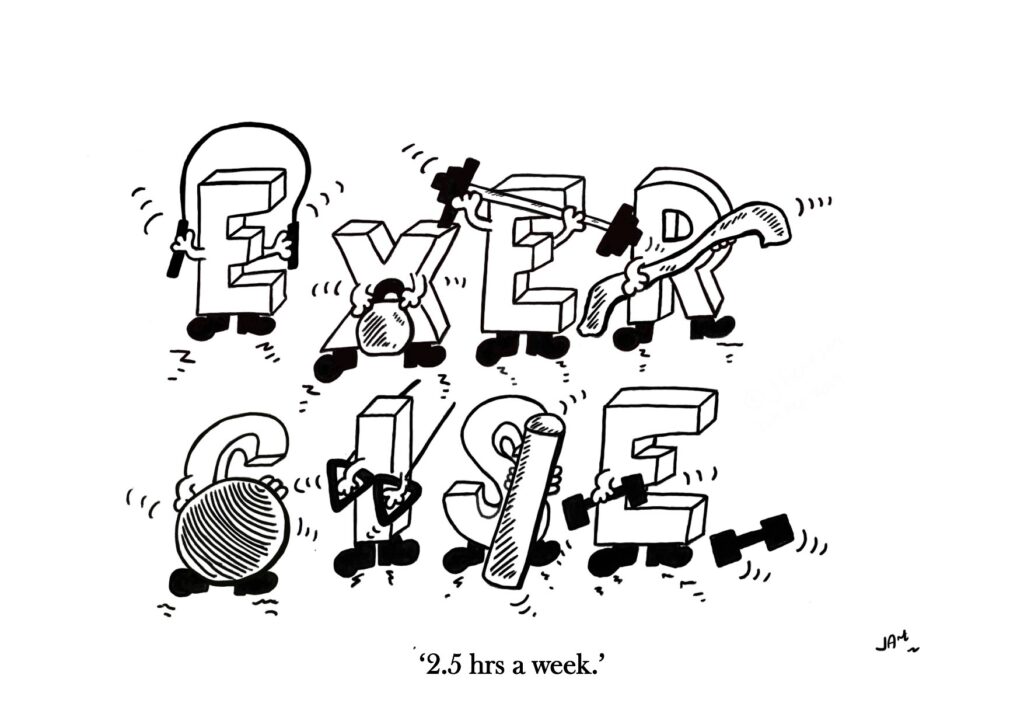
Not a symptom, but there is evidence that exercise may hold specific benefits for people with Parkinson’s disease through preventing or slowing progression, managing symptoms which are helped by exercise, such as constipation and balance, and it also improves strength and is linked to better brain health.
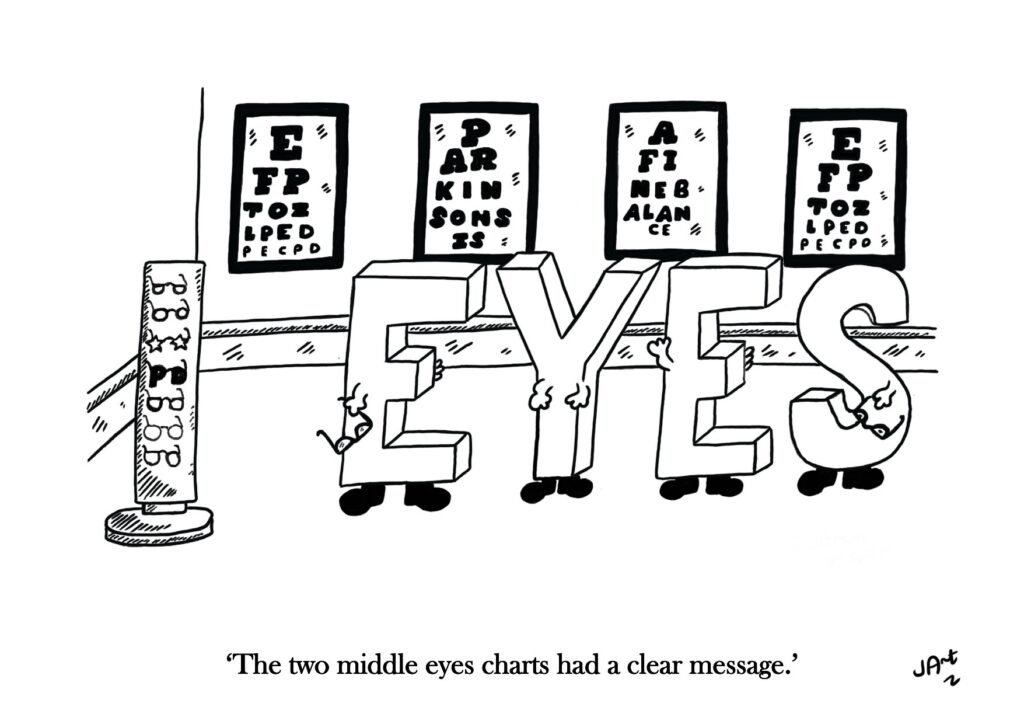
Parkinson’s can affect the ability to move parts of the body, including eyes. So there may be difficulties when starting to move the eyes or when trying to move them quickly. It may be more noticeable when looking at a fast-moving object, such as when watching moving cars or a tennis match. Sometimes, instead of a smooth movement, the eyes may move in a slow and jerky way.

Rigidity can also stop facial muscles working as well as they used to. This can make face movements slower and stiffer than before and limit the amount of facial expressions. When this happens, it can sometimes look like a blank expression, even if someone is actually experiencing a strong emotion. The medical term is hypomimia, but it is often referred to as a Parkinson’s mask, or facial masking and is a common symptom.

Loss of balance and falling affects many people with Parkinson’s and the problem tends to increase over time.
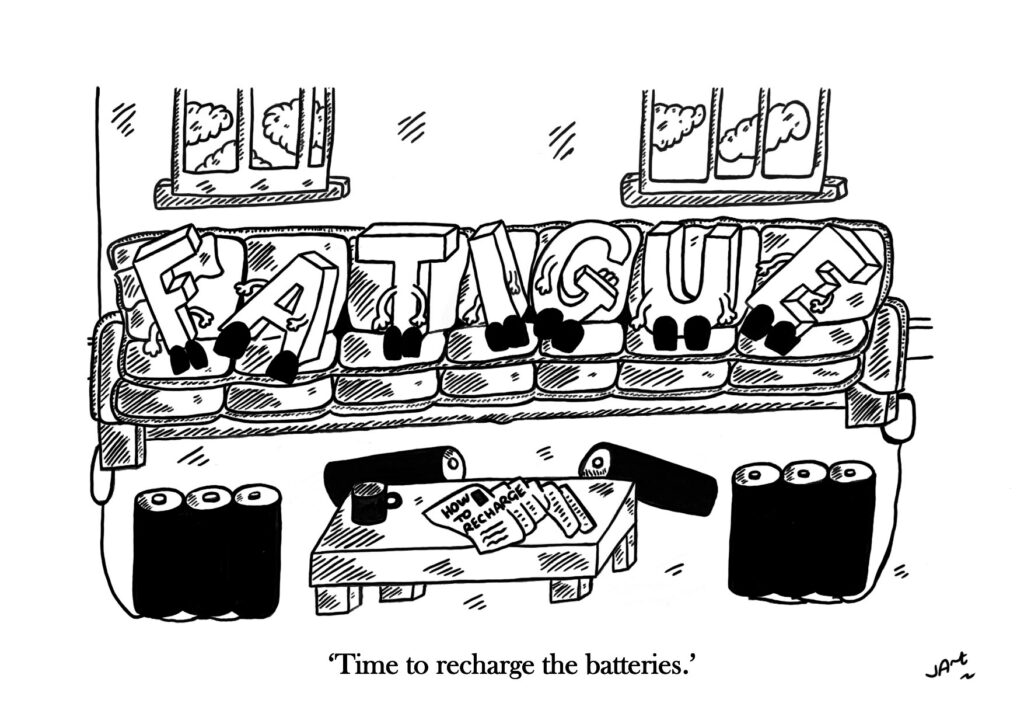
Fatigue has been described as an overwhelming sense of tiredness, a lack of energy and a feeling of exhaustion. It is more than a one-off feeling of tiredness that will go away after sleeping well. Up to half of people with Parkinson’s say they experience fatigue.

Freezing can be a common symptom of Parkinson’s. People describe it as feeling like their feet are ‘glued’ to the ground.
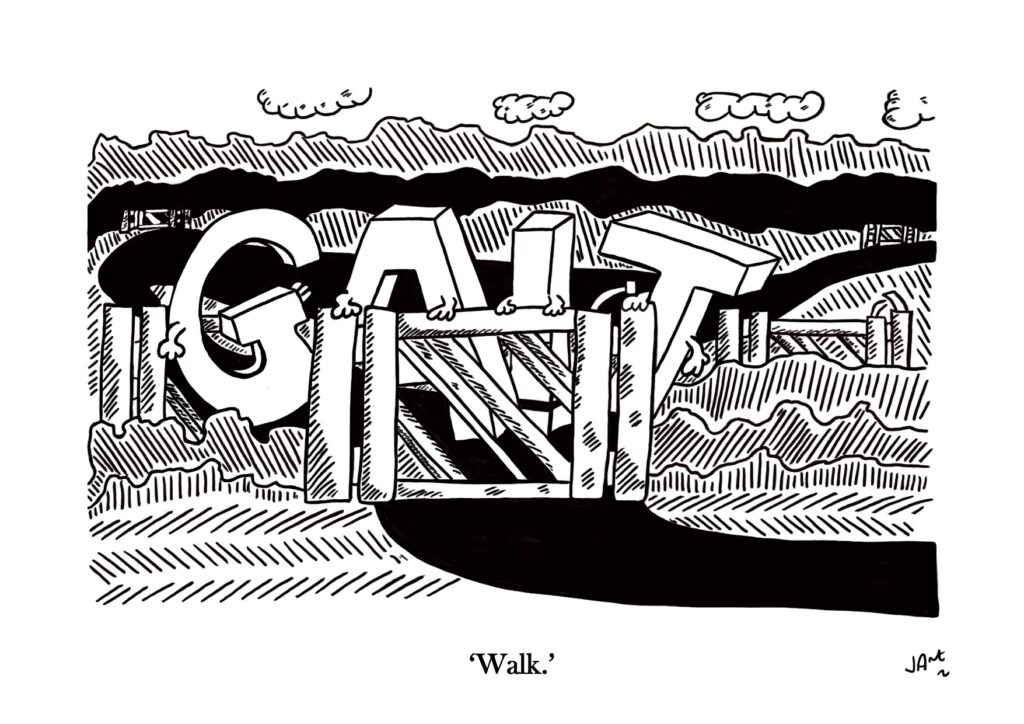
Parkinsonian gait is characterized by small shuffling steps and a general slowness of movement (hypokinesia), or even the total loss of movement (akinesia) in extreme cases.
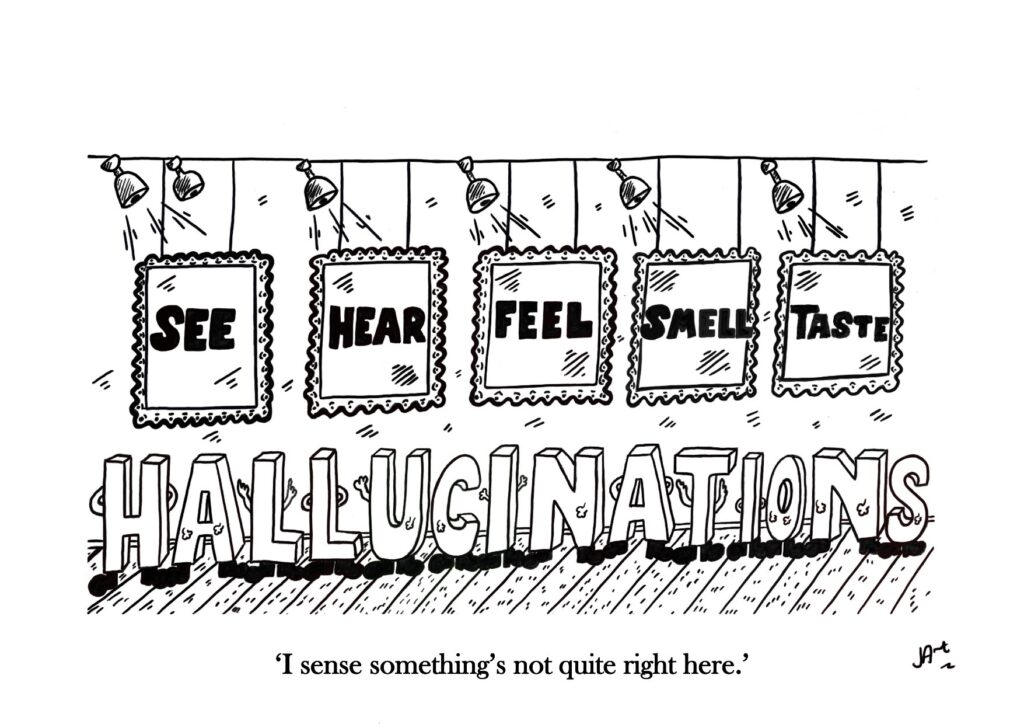
Hallucinations and delusions usually happen in the later stages of Parkinson’s. They can affect both younger and older people in the earlier stages of the condition, but this is less common.
Usually, when people with Parkinson’s experience hallucinations and delusions, it will be a side effect of their medication rather than a direct symptom of Parkinson’s.

Impulse control disorders in Parkinson’s disease are aberrant behavior such as pathological gambling, hypersexuality, binge eating, and compulsive buying, which typically occur as a result of dopaminergic therapy.

Incontinence. Urge incontinence and nocturia are the most common bladder problems in Parkinson’s. These problems may happen because the messages the brain sends to the bladder are not going through properly.
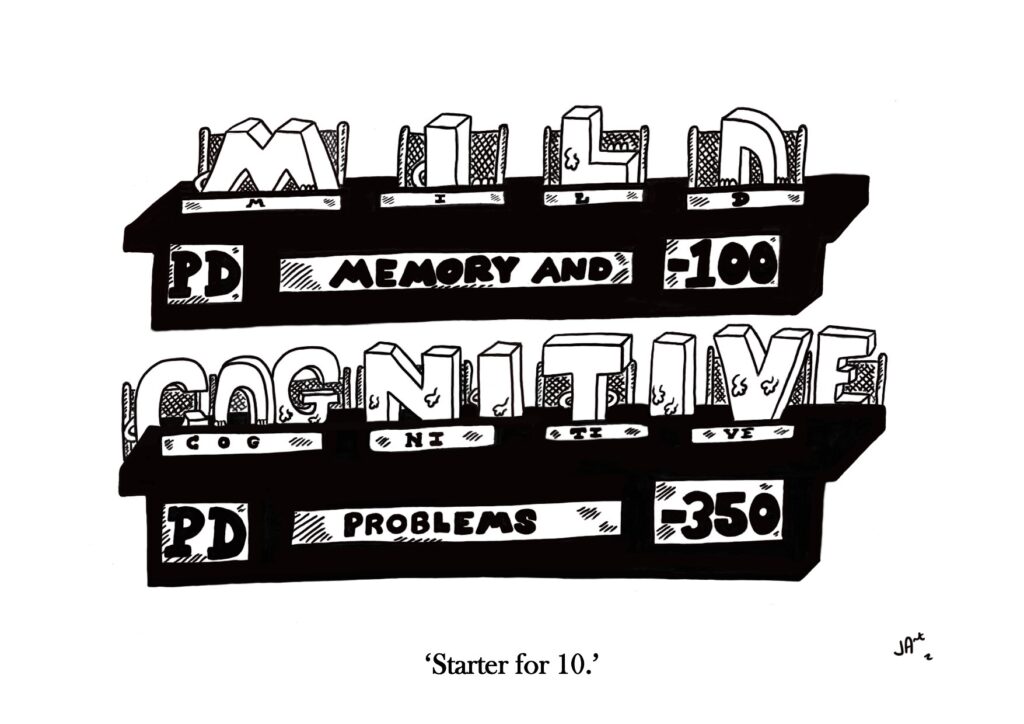
Memory and thinking problems. According to Parkinsons UK, around half of all people with Parkinson’s will experience some form of mild cognitive problems within 10 years of their diagnosis”. The reasons for this include lower levels of acetylcholine and dopamine (both neurotransmitters).
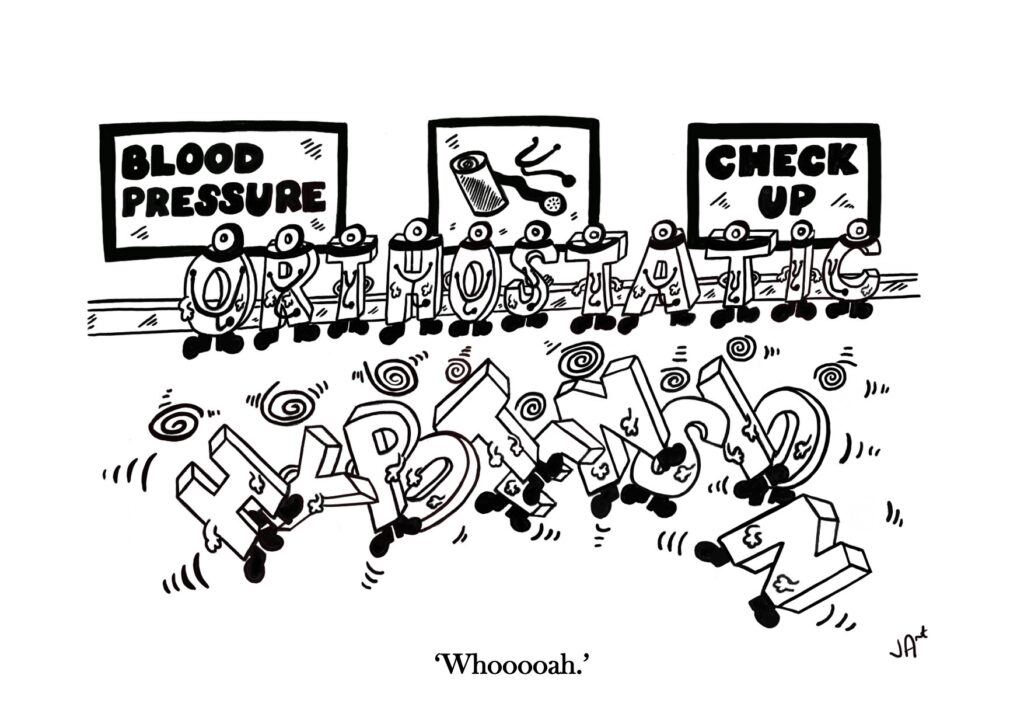
Autonomic nervous system (ANS) dysfunction is common in Parkinson’s disease and affects 70% to 80% of patients. ANS dysfunction symptoms in PD includes Low Blood Pressure (hypotension).

Musculoskeletal Pain is a common pain felt by people with Parkinson’s. It is related to Parkinson’s rigidity and reduced joint movements. Often “frozen shoulder” is the first symptom noticed by some people with the disease.
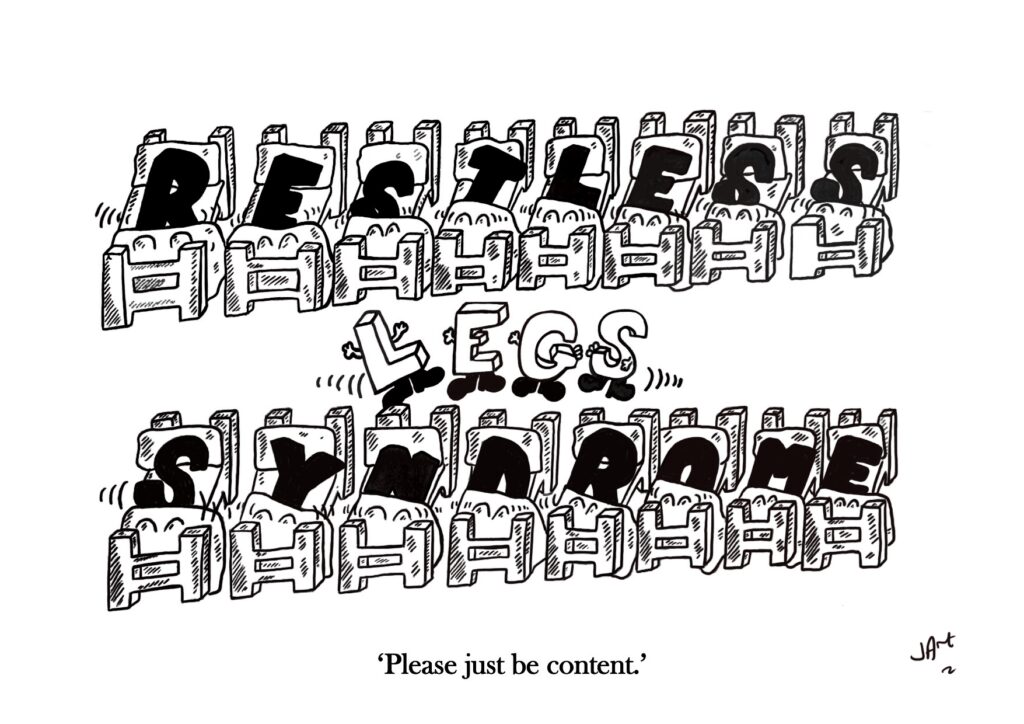
Restless Legs Syndrome is an overwhelming urge to move your legs. Also called Willis-Ekbom disease and affects people who don’t have Parkinson’s too.

Sleep is one of the major issues with Parkinson’s, with insomnia leading to other problems such as daytime sleepiness.
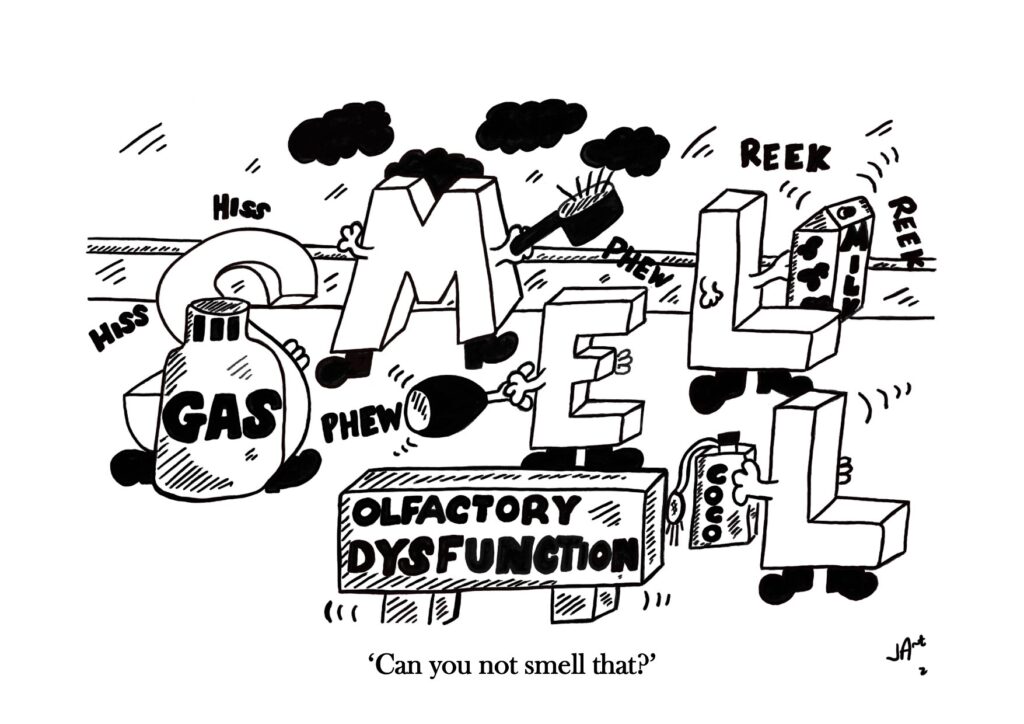
Loss or reduction of smell (anosmia) is common in Parkinson’s and can be one of the earliest symptoms.

Rigidity is one of the most common motor symptoms in Parkinson’s, and 90% of people with Parkinson’s experience rigidity at some point during their Parkinson’s progression.
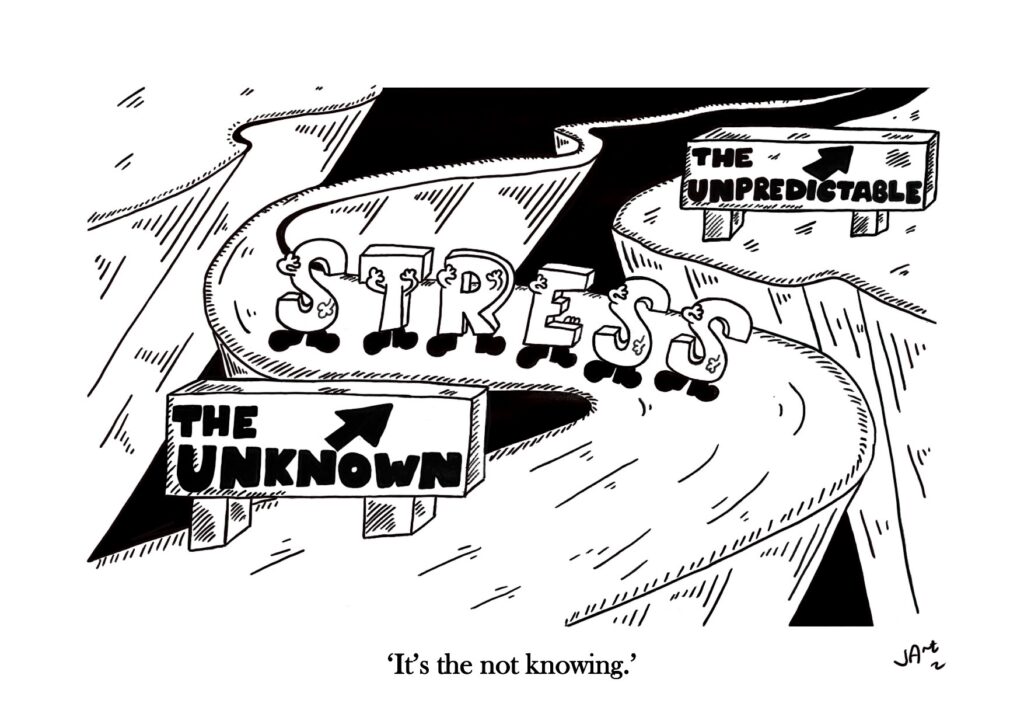
People with Parkinson’s Disease report thst acute stress worsend their motor symptoms, and chronic stress worsens non-motor symptoms.

Parkinson’s can casue the muscles in the face and jaw to become slow and stiff, leading to eating and swallowing problems.

People with Parkinson’s may have problems with the part of the nervous system that controls sweating. This can lead to excessive sweating. Sometimes, people with Parkinson’s can also experience sweating at night.
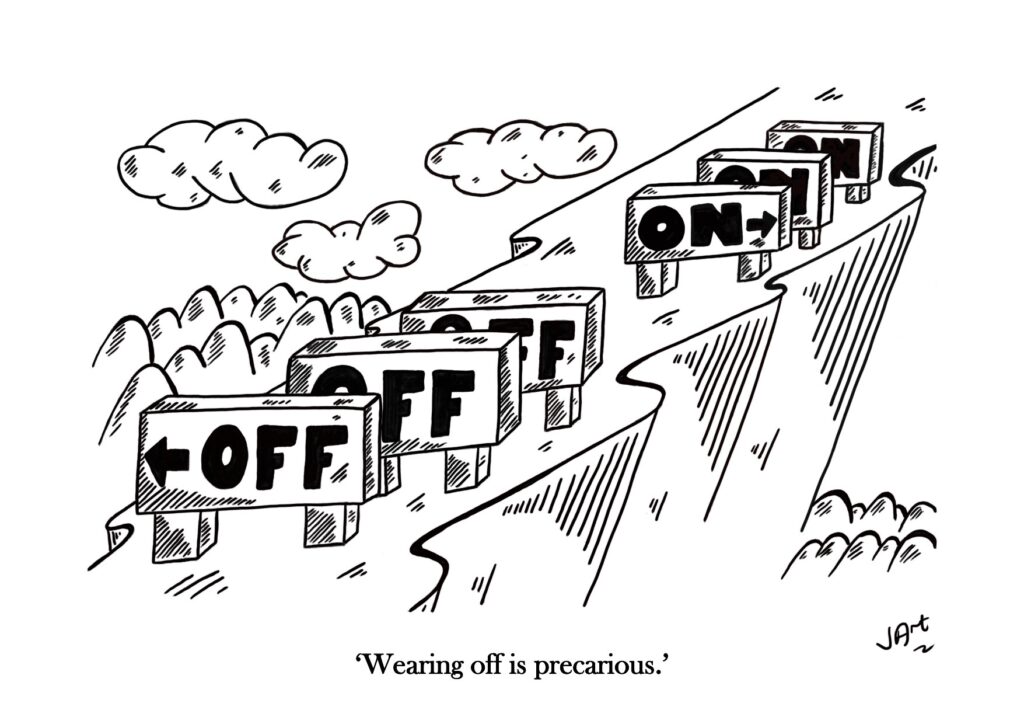
Wearing off happens when the Parkinson’s medication is no longer working as effectively as it used to. Because of this, Parkinson’s symptoms may return towards the end of a medication dose, or near the beginning of the next dose.
Other symptoms include:
Melanoma, Skin issues, saliva control, speech problems, foot care, mouth and dental issues, tremor, dizziness, muscle cramps, erectile dysfunction, dreams, micrographia, and weight loss.
